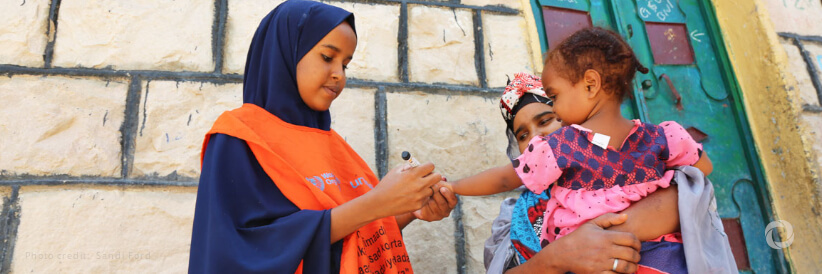Amid fears that pockets of the country are at risk of famine, the child rights organization warns that girls and young women are caught in a double crisis of hunger and violence as four successive failed spots of rain have left families and communities struggling to cope.
A third (34%) of people surveyed by the NGO in the Sool, Sanaag, and Togdheer regions of Somaliland believe security risks to girls and women have increased as a result of the drought.
Risks to girls and women have increased as a result of drought
The most commonly cited dangers were rape, sexual harassment, domestic violence, child, early and forced marriage and unions, and female genital mutilation/cutting (FGM/C) – all of which are classed as significant human rights violations under international law and have devastating consequences for the health and lives of girls and women.
“As is so often the case, girls and women are bearing the brunt of this heartbreaking crisis.”
Sadia Allin, Plan International’s head of mission in Somalia and Somaliland
A third (30%) also said they knew of a girl or woman who has survived sexual or gender-based violence in the last six months, a figure which is likely to be a conservative estimate given the stigma and taboo associated with disclosing sexual violence.
“Unless humanitarian aid is urgently and immediately stepped up, we face a situation where thousands of children in Somalia will lose their lives needlessly and countless more will face other dangers and rights violations such as rape, violence, and early marriage. We urgently need more support from donors so that we can reach more children, especially girls, and their families. The time to act is now.”
Somalis forced to flee their homes
In the first three months of this year alone, the UN estimates half a million Somalis have been forced to leave their homes because of the drought, in search of food, water, work opportunities, or humanitarian assistance. This has left many families living in makeshift housing in informal settlements, often creating additional safety risks for children and women, especially girls.
The UN has warned that as the country faces a fourth consecutive failed rainy season this year, 350,000 children in Somalia could die of preventable malnutrition unless humanitarian support is urgently scaled up. The 2011 food crisis – which killed 260,000 people, half of them children – came after just two failed rainy seasons.
A separate needs assessment carried out by Plan International in Sool and Sanaag regions in December last year found that children in more than half of households (59%) were already eating only two meals a day and that one in 10 (14%) were surviving on one meal a day.
The Horn of Africa in hunger crisis
Across the Horn of Africa as a whole, it is feared that up to 20 million people in Kenya, Somalia, and Ethiopia will go hungry this year. Food prices – which were already at a high this year because of COVID-19, conflict, and climate shocks – have been pushed even higher by the conflict in Ukraine, a key global exporter of grain, sunflower oil, and other staples.
More than a third (35%) of people surveyed by Plan International say they are now surviving on less than $5 per month. Another 35% estimated that their monthly income is less than $50.
In partnership with local partners Taakulo and Nafis, Plan International is providing life-saving humanitarian assistance to communities in Somalia including cash assistance, drinking water, and dignity kits for adolescent girls and young women. The organization’s funding target for famine prevention programs in Somalia is $5 million, which is currently underfunded by $4.1 million.

